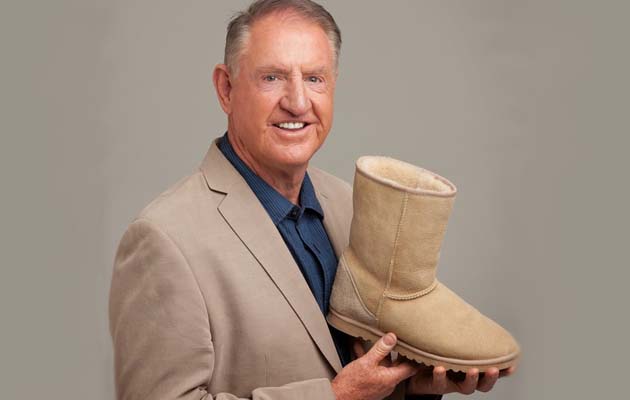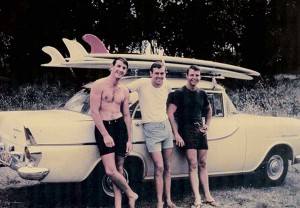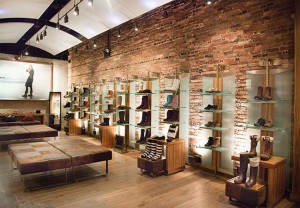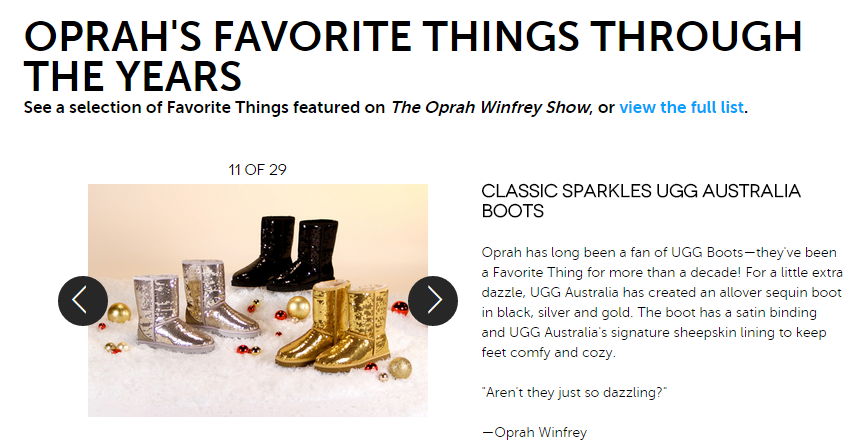How UGG Founder Brian Smith Turned a $500 Loan into Billion Dollar Brand


In the late 1970’s, UGG Founder Brian Smith took a leap of faith when he decided to leave his accounting career, take out a small loan and travel to California to market an unknown pair of sheepskin boots.
Nearly 20 years later, the brand would become a household name in footwear across the globe, reaching 15 million in sales. Since, UGG has exceeded $1 billion in international sales.

Before Smith became one of the most recognized business leaders in the retail market, he was just another surfer on the coast with a desire to find the next “big thing”.
Smith fell in love with the surf community at an early age. Eventually, he lost interest in his accounting career and wanted to manage his own business. The tricky part was figuring out what he wanted to sell and how he would market it. Ironically, the next big product was right under his feet.
“It started when I was meditating in Australia, after I quit being an accountant and I was wondering what am I going to do. That’s when the thought came to me – all the trends were coming out of California. I came to California looking for the next big thing to bring back to Australia.”
Smith was traveling in the states for several months but still hadn’t found what he was looking for. One day, he picked up a surfer magazine with an ad inside for a pair of sheepskin boots. That was when he knew he had found his product.
“It struck me instantly. There are no sheepskin boots in America,” he said.
The sheepskin trend was growing rapidly in Australia, almost every high school girl at this point already owned a pair and Australian surfers were just starting to bring the product with them into the states.
According to Smith, “Because I knew California and Australia were very similar, I thought this was going to be an overnight success. But it didn’t exactly work out that way. I thought it would be a very easy cross over but what I didn’t realize was that Americans didn’t get sheepskin the way Australians did.”
Starting out, Smith found little success with his new brand. He said it was extremely difficult to market the product in the US, specifically Southern California. Consumers had an idea that sheepskin was very delicate but in fact, the product was considered durable in Australian culture. Surfers coming out of the water with cold feet loved their UGGs because they were warm and comfortable.
In the early stages, Smith attempted to market his boots to the media using expensive and glamorous models. His early efforts proved unsuccessful until Smith encountered a young surfer who told him the UGG brand “looked fake”. Suddenly, Smith knew he had found his marketing niche.
He started booking shoots with semi and pro surfers. After almost 3 years of no traction in the market, UGG sales skyrocketed to $400,000 in a two month season.
“I figured out that advertising is all about getting the reader to want to be in the photograph. If you can make an ad so appealing that every reader is thinking I wish that was me then you’ve got a successful ad and that’s what drives the sale,” he said.

While the surf community in the US was finally starting to embrace his product, he still struggled to break into other markets such as ski and snowboarding.
Smith took his best sales pitch to Chicago, hoping to gain the attention of big name retailers like Macys or Nordstroms. After what he considered a solid presentation, a buyer approached Smith and puzzled him with one simple question.
“He said to me, Brian, why are you here? Don’t you get it? We are the elephants – we don’t move until the mice are running around under our feet.”
Retail distribution was the main area of interest for Smith at the time but until specialty stores were selling out his product regularly, no major name retailers were going to “take the risk” of selling UGG.
UGG decided to hire a PR agency and launch a “national casual comfort” campaign. Unfortunately, the agent overbooked and gave Smith only 5 minutes to pitch his product. That very brief phone call would lead to one of the biggest breakthroughs for the brand.
The following day, UGG boots were on the front page of the Lifestyle section of USA Today. By the time Smith arrived back in California, the “phones hadn’t stopped ringing from retailers all over the country who wanted to know how to stock UGGs”.
By 1994, UGG had grown in status among surfers in California with 80 percent of sales in southern Orange County. Smith’s boots later gained international exposure when they were worn by the U.S. Olympic team in Lillehammer for the 1994 Winter Olympics.
Sting’s wife, Trudie Styler was an advocate for the brand and one of the first celebrities to convince Smith to send a pair of UGG boots to Oprah. In 2000, nearly 3 years after the initial pitch, Oprah emphatically declared UGG one of her “Favorite Things” and the brand gifted 350 pairs of boots to her studio audience.
The brand was unstoppable. Hockey moms, celebrities, and nearly every young female in the United States owned or was friends with someone who owned a pair of UGGs.

Smith sold UGG to Deckers Outdoor Corporation for an estimated $14.6 million. In 2006, UGG opened the doors to the brand’s very first retail store in Soho, making its mark on the fashion capital of the world. By 2008, the company reported sales in the US $689 million.
According to Smith there were two factors that ultimately encouraged him to move on from the UGG brand.
“I found that I was spending more time in meetings and conference calls. For me, a true entrepreneur – that felt like a waste of time. There was no risk and no excitement anymore for me and so I was done. The other part of it was that it was such a big year, it looked like we were going to hit 20 million in sales in the coming year and I didn’t have the capital to finance the production.”
“I had reached the peak of my ability to grow the company. It needed someone from the industry who really understood the fashion market to take it into a different area.”
Constance “Connie” X. Rishwain has been Group President of Fashion & Lifestyle Brands at Deckers Outdoor Corp. since January 2014 and President of UGG Australia since December 2002.
“She’s the one that deserves all the credit for taking it from 20 million up to a billion, because she had the skill from a fashion and product merchandising viewpoint to take it to the level that I could never have done,” Smith said.
Smith is just about to finish up a new book and embark on a new business venture. According to Smith, he’s identified that over 100 million Americans between the ages of 50 and 70 years old control 70 percent of the disposable income in the country. Smith estimates one third of these “Booma-preneurs” want to start another business.
“That’s 30 million people over 50 who will start another business,” Smith said. “Now we are all the age where we want to do something to give back and leave a legacy and so that’s what my new book is going to be all about.”
Along with the book, Smith will offer a tour, guest speakers and workshops to help this registrants developers their “legacy” and new business.
“People still want the same thing. They are still influenced by peer pressure, image and comfort. A product has to back up a brand’s promise. Nothing has changed except the way they see it. Instead of buying a newspaper or a magazine, now their seeing it online.”
“Social Media is just another form of advertising,” Smith said. “Instead of postcards or mailers it’s now Facebook. Everything has gone faster and electronic.”
For more on Smith’s latest book or to keep up with his latest business developments, visit briansmithspeaker.com
